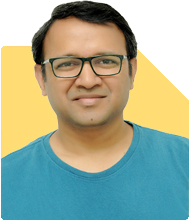Ramalingam Kalirajan |10074 Answers |Ask -Follow
Mutual Funds, Financial Planning Expert - Answered on May 26, 2024
He has an MBA in finance from the University of Madras and is a certified financial planner.
He is the director and chief financial planner at Holistic Investment, a Chennai-based firm that offers financial planning and wealth management advice.... more

i have mutual fund portfolio of about 90 lakh. i want to consolidate these to a few schemes, for which i need your suggestion. I am 60 and retired and am looking for 1.5 lakh per month return for next 25 years. Possible?
As a Certified Financial Planner, I appreciate your proactive approach to consolidating your mutual fund portfolio to achieve your retirement income goals. Let's explore potential strategies to optimize your portfolio for sustainable returns over the next 25 years.
Understanding Retirement Income Needs
Retirement planning involves assessing your income requirements and ensuring your investment portfolio generates sufficient cash flow to sustain your lifestyle throughout your retirement years. With a target of Rs. 1.5 lakh per month for the next 25 years, it's essential to construct a robust portfolio capable of meeting this income goal while accounting for inflation and market volatility.
Consolidating Mutual Fund Holdings
Consolidating your mutual fund holdings simplifies portfolio management, reduces administrative complexity, and enhances overall efficiency. By streamlining your investments into a few carefully selected schemes, you can gain better visibility and control over your portfolio. Your Certified Financial Planner (CFP) can help identify redundant or underperforming funds and recommend suitable alternatives aligned with your retirement objectives.
Creating a Retirement Income Strategy
To generate a consistent monthly income of Rs. 1.5 lakh over the next 25 years, consider the following strategies:
Dividend-Yielding Equity Funds: Invest in dividend-yielding equity funds with a track record of stable returns and regular income distributions. These funds provide a source of passive income while offering the potential for capital appreciation over the long term.
Debt Funds for Stability: Allocate a portion of your portfolio to debt funds to provide stability and mitigate downside risk. Opt for high-quality debt instruments with relatively low volatility, such as government bonds and corporate debt securities. Your CFP can recommend suitable debt funds based on your risk tolerance and investment horizon.
Systematic Withdrawal Plans (SWPs): Implement SWPs to systematically withdraw a fixed amount from your mutual fund investments at regular intervals, thereby generating a steady stream of income. SWPs allow you to tailor your cash flow requirements according to your retirement income needs while preserving the principal amount.
Mitigating Risks and Ensuring Long-Term Sustainability
While aiming for a monthly income of Rs. 1.5 lakh, it's essential to adopt risk management strategies to safeguard your retirement corpus and ensure its long-term sustainability:
Diversification: Maintain a well-diversified portfolio across asset classes, sectors, and investment styles to reduce concentration risk and enhance resilience against market fluctuations.
Regular Portfolio Reviews: Periodically review your portfolio with your CFP to assess performance, rebalance asset allocations, and make necessary adjustments in response to changing market conditions or life events.
Monitoring Inflation: Factor in the impact of inflation on your retirement income needs and adjust your withdrawal rate accordingly to preserve purchasing power over time.
Conclusion
In conclusion, by consolidating your mutual fund portfolio and adopting a structured retirement income strategy, you can work towards achieving your goal of generating a monthly income of Rs. 1.5 lakh over the next 25 years. With the guidance of a Certified Financial Planner, you can navigate market uncertainties and build a resilient investment portfolio tailored to your retirement objectives.
Best Regards,
K. Ramalingam, MBA, CFP,
Chief Financial Planner,
www.holisticinvestment.in
You may like to see similar questions and answers below
Omkeshwar Singh | Answer |Ask -Follow
Head, Rank MF - Answered on Sep 08, 2021
Ramalingam Kalirajan |10074 Answers |Ask -Follow
Mutual Funds, Financial Planning Expert - Answered on Apr 24, 2024
Ramalingam Kalirajan |10074 Answers |Ask -Follow
Mutual Funds, Financial Planning Expert - Answered on Jun 25, 2024
Ramalingam Kalirajan |10074 Answers |Ask -Follow
Mutual Funds, Financial Planning Expert - Answered on Jul 29, 2024
Ramalingam Kalirajan |10074 Answers |Ask -Follow
Mutual Funds, Financial Planning Expert - Answered on Aug 02, 2025
Ramalingam Kalirajan |10074 Answers |Ask -Follow
Mutual Funds, Financial Planning Expert - Answered on Aug 02, 2025
Ramalingam Kalirajan |10074 Answers |Ask -Follow
Mutual Funds, Financial Planning Expert - Answered on Aug 02, 2025
Patrick Dsouza |1353 Answers |Ask -Follow
CAT, XAT, CMAT, CET Expert - Answered on Aug 02, 2025
Patrick Dsouza |1353 Answers |Ask -Follow
CAT, XAT, CMAT, CET Expert - Answered on Aug 02, 2025
Radheshyam Zanwar |6075 Answers |Ask -Follow
MHT-CET, IIT-JEE, NEET-UG Expert - Answered on Aug 02, 2025
Nayagam P P |9804 Answers |Ask -Follow
Career Counsellor - Answered on Aug 02, 2025
Nayagam P P |9804 Answers |Ask -Follow
Career Counsellor - Answered on Aug 02, 2025
Nayagam P P |9804 Answers |Ask -Follow
Career Counsellor - Answered on Aug 02, 2025
Nayagam P P |9804 Answers |Ask -Follow
Career Counsellor - Answered on Aug 02, 2025























